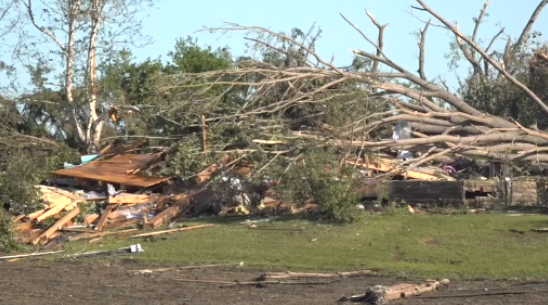Pittsburgh meteorologist explains Enhanced Fujita scale for tornadoes
Some big news came out in the meteorological community on Monday regarding a powerful tornado that occurred in eastern North Dakota on June 20, 2025. The National Weather Service in Grand Forks upgraded the rating of a tornado near Enderlin to an EF-5 with winds greater than 210 mph.
The tornado lasted 19 minutes, traveled 12 miles, and was a mile wide at times. This tornado was the first EF-5 in the United States since the Moore, Oklahoma, EF-5 tornado on May 20, 2013.
For a tornado to be rated EF-5, that is exceptionally rare. Since 2007, they have only counted for 0.04% of all tornadoes rated in the relatively new "EF" or Enhanced Fujita, scale.
The original Fujita scale
The original scale for rating tornadoes in this country came from Dr. T. Theodore Fujita, a famous tornado researcher and scientist.
Fujita introduced the scale in 1971, and it was named the "F," or Fujita scale. It became heavily used in rating the intensity and path of tornadoes after the 1974 Super Outbreak.
Fujita created the scale to bridge the gap between the Beaufort scale, which measures wind speeds from a calm breeze up to hurricane force, and the Mach scale, which measures the speed of atmospheric sound.
The enhanced Fujita scale
The original Fujita scale had some weaknesses, which prompted the need for a revision or update to the scale. The wind speeds with F-3+ were overestimated, descriptions of damage lacked specificity, and the construction quality and practices of structures were often overlooked.
These updates were implemented on February 1, 2007, with the birth of the "EF" or Enhanced Fujita scale. The EF scale lowered estimated wind speeds for the categorization of significant (EF-2 to EF-5) tornadoes.
It still maintained some conformity to the original tornado database in terms of tornado category. Twenty-eight damage indicators — including vegetation — were introduced with a degree of damage (upper or lower bound) for each indicator. Construction quality is also now heavily considered in a rating on the EF-scale, along with the damage of multiple structures, not just one.
Problems with the Enhanced Fujita scale
Despite the improvements the EF-Scale brought, it also brought along some new problems of its own. The EF-Scale is a damage scale, not an intensity scale. This means some truly strong and violent tornadoes are misrepresented in climatology and databases, especially if they occur in rural areas with few things to hit.
A study Wurman et al. (2021) states that greater than 20% of supercell tornadoes can cause EF-4 to EF-5 damage and are much wider than damage surveys indicate. Mobile doppler radars, which provide high-resolution data of tornado-like wind speeds near the ground, are also not considered in the final rating of the tornado.
Improvements to the Enhanced Fujita scale
There are some considerations being made to improve and revamp the EF-Scale. This includes adding more damage indicators, especially those that are likely to be found in rural areas. Math and physics can be used to calculate the wind speed and force needed to achieve a certain degree of damage from a tornado as well.
Pennsylvania's F(EF)-5 tornado
The only F(EF)-5 tornado to hit Pennsylvania occurred during the May 31, 1985, tornado outbreak. This tornado began in Newton Falls, Ohio, and tracked into Wheatland, Pennsylvania, in Mercer County. The damage was described as a "bombed out battlefield," according to the National Weather Service in State College.
Extreme and exceptional occurrences of damage that contributed to this tornado earning an F(EF)-5 rating included a petroleum tank farm destroyed with some tanks "bounced a considerable distance" in Niles, Ohio. These tanks can range from thousands to tens of thousands of pounds in weight. A trucking plant in Wheatland was also twisted beyond recognition. Asphalt was also peeled from the parking lot of the trucking plant, with metal wedged underneath.






